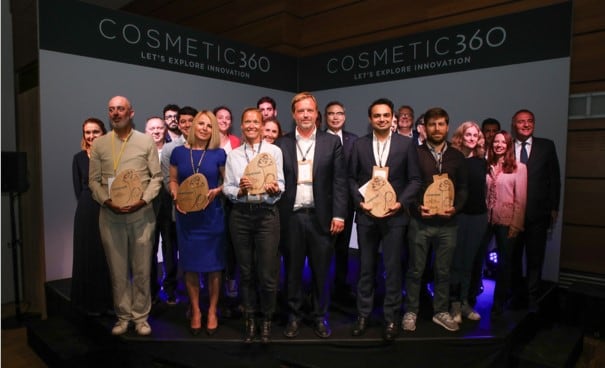Ahead of NATRUE’s annual International Day of Natural Cosmetics on 23rd November, CosmeticsDesign-Europe spoke to Dr Mark Smith, the Director General at the international non-profit for natural and organic cosmetics.
CDE: What are the main issues currently facing the natural cosmetics industry?
Dr Mark Smith (MS): The natural cosmetics sector faces several key challenges, which relate to emerging and evolving EU regulation, supply chain impacts from geopolitical events, and the overarching need for sustainability.
Historically, manufacturers in the natural cosmetics sector have always prioritised aspects of social and environmental sustainability in their business models and investments. However, even without external factors, supporting the internal allocation of resources to ensure continuous improvement to a company’s organisational and product sustainability profiles remains a significant challenge for any sector.
Another factor has been the sector’s response to successive external influences, such as inflation and the rising cost-of-living, upon consumption and sourcing. These factors can lead to increased production costs, or reductions or fluctuations in availability or supply of natural raw materials; and consequently, this can impact the consumer either in terms of the diversity of product choice or its price. Nevertheless, whilst in some cases cost-conscious consumers may turn to cheaper options such as own-label retailer brands, this does not mean they are necessarily moving away from genuinely natural or organic products since these same brands may also be certified as natural or organic.
Lastly, in terms of existing legislation at EU level, there remains a fundamental absence of regulatory precision or harmonised criteria for substantiating cosmetic product claims like ‘natural’ or ‘organic’. While some Member States provide guidelines, these are commonly not legally-binding definitions. Consequently the status quo invites the risk of greenwashing, which disconnects consumer perception and expectation from reality, and impacts trust.
From a broader perspective, the breadth of emerging and expanding regulation associated with the European Green Deal will also affect natural cosmetics. For instance, the revisions of existing legislation covering REACH, CLP, the EU Cosmetics Regulation and the packaging and packaging waste, through to new proposals centred around eco-design for sustainable products and environmental claims substantiation, will each impact the cosmetics industry and so the natural sector.
CDE: What trends and innovations are you seeing in the natural cosmetics sector?
MS: The industry is evolving on many fronts. The central focus revolves around companies’ ongoing commitment to enhancing their sustainability efforts and adapting their business models and product portfolios to developing environmental and societal needs. In effect this translates into reducing products’ environmental impact and promoting their positive social sustainability across their entire life cycle.
Specific industry trends continue to relate to aspects such as increased emphasis on ethical sourcing, expanded use of biotechnology, evaluating the biodegradability of raw materials, development of natural, renewable alternatives to petrochemical-based substances, improved efficacy, and sustainability for the extraction of natural substances, and greater use of green chemistry practices to develop natural derivatives.
The expanding palette of natural raw materials is also providing formulators with access to new product categories, which, in turn, offers more choice to consumers. Consumers continue to expect transparency in product formulation, and increasingly expect brands to use sustainable packaging systems such as refill and re-use.
CDE: What was the most exciting thing you’ve seen recently within the natural cosmetics sector?
MS: The potential of the circular economy to enhance sustainable innovation represents an exciting field for the natural cosmetics sector. This involves improving existing extraction methods to substitute petrochemical solvents with sustainable alternatives, developing and using biotechnology, increasing the use of upcycling when it comes to waste streams and by-products, as well as capturing and converting CO2. All of these reflect how innovation is relevant and happening.
Continuing to harness the potential of the circular economy is not limited to certain ingredients but extends more broadly to formulations and packaging. This approach remains both essential and a thrilling area scientifically to explore.
CDE: Cosmetic scientists often highlight the issue that ‘natural’ doesn’t always mean ‘better for you or the planet’. What’s your view on this topic?
MS: Sustainability is complex. Natural need not always mean sustainable. For instance, if there is high demand for an agricultural product and supply is low, the product will become unsustainable. However, natural raw materials, if cultivated sustainability, are equally renewable. This sets them apart from fossil fuels, which are ultimately finite.
In terms of the extraction and manufacture of naturals, there is an ever-increasing adaptation of existing and use of novel green chemistry methods to produce, isolate, purify and derivatise these substances. Methods like the use of biotechnology to develop new isolates and natural complex mixtures offers sustainable alternatives to traditional processes for natural substances, by operating in controlled environments at lower temperatures using less land and resource use. In this same vein, we are witnessing upcycling of raw materials to reduce waste and increase valorisation of natural products.
Furthermore, unlike fossil fuel derivatives, when we are talking about naturals, we cannot exclude the social sustainable component. Ethical and socially sustainable sourcing of natural raw materials can provide a means of income and empowerment for communities around the world. In the cosmetics industry, we often speak of sustainable innovation that considers the impact of each substance, and naturals are no different. What remains to be seen is how the changing face of natural and sustainable cosmetics evolves with developing environmental needs and societal trends.
To celebrate International Day of Natural Cosmetics on 23rd November 2023, NATRUE is hosting a free panel discussion Commitment for a Greener Future: How Can We Make (Natural and Organic) Cosmetics More Sustainable? Find out more or reserve your free place here.



